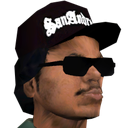
Kev
Illegal Faction Team-
Posts
829 -
Joined
-
Last visited
-
Days Won
3
Content Type
Profiles
Blogs
Forums
Calendar
News
Everything posted by Kev
-
OPERATION "ORCA": The Bellantonio Crime Family Casefile
Kev replied to Clack's topic in Screenshots & Videos
He was still in field training when this happened -
Money talks








